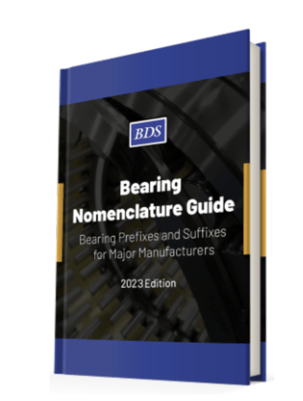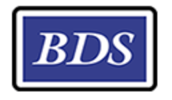The world of bearings is vast and multifaceted, encompassing a wide array of designs, configurations, and functionalities tailored to specific needs and industries. Understanding the terminology surrounding bearings is fundamental for selecting the right bearings for various applications, ensuring optimal performance, longevity, and efficiency of machinery.
Glossary of Bearing Terminology
Bearing: A machine element that allows smooth movement between two parts, reducing friction and supporting loads.
Ball Bearing: A type of rolling-element bearing that uses balls to maintain separation between the bearing races. It reduces friction and provides support for radial and axial loads.
Roller Bearing: A bearing that uses cylindrical or tapered rollers between the races to support radial and axial loads, offering higher load capacity than ball bearings.
Thrust Bearing: Designed to support axial loads, these bearings prevent axial movement between components.
Radial Load: The perpendicular force applied to the bearing, causing pressure in a direction perpendicular to the shaft's axis.
Axial Load: The force applied parallel to the shaft's axis, creating pressure along the shaft's length.
Friction: The resistance to motion between surfaces in contact. Bearings aim to reduce friction for smooth movement.
Clearance: The space or gap between moving parts in a bearing assembly, allowing for thermal expansion, lubrication, and proper functioning.
Seal/Sealing: Components used to prevent contaminants like dust, dirt, or moisture from entering the bearing, maintaining its performance and lifespan.
Cage/Retainer: A component that separates and holds rolling elements (balls or rollers) at a uniform distance within the bearing, ensuring smooth rotation and reducing friction.
Lubrication: The process of applying a lubricant to bearings to reduce friction, dissipate heat, and prevent wear and corrosion.
Grease: A semisolid lubricant used in bearings, composed of a base oil and a thickening agent, providing long-term lubrication.
Oil Bath/Oil Lubrication: Submerging bearings in oil to provide lubrication and cooling, commonly used in certain industrial applications.
Static Load Rating: The maximum load a bearing can withstand without deformation while stationary.
Dynamic Load Rating: The maximum load a bearing can endure while rotating at a constant speed without premature fatigue or failure.
Ceramic Bearings: Bearings utilizing ceramic materials (e.g., silicon nitride) for rolling elements, offering higher stiffness, lower friction, and resistance to corrosion.
Hybrid Bearings: Bearings combining ceramic rolling elements with steel races, providing a balance between performance and cost.
Angular Contact Bearing: A type of bearing designed to withstand combined radial and axial loads by angling the contact between the races and rolling elements.
Self-Aligning Bearing: Bearings designed to compensate for misalignment, reducing wear and extending bearing life.
High Precision Bearings: Bearings manufactured with tight tolerances and accuracy, used in applications requiring precise rotational motion.
Automotive Bearings: Bearings specifically designed for use in automotive applications, including wheel hub units, gearbox bearings, and engine components.
Aerospace Bearings: Bearings engineered to meet stringent aerospace requirements, providing reliability, durability, and performance in extreme conditions.

Bearing Nomenclature
Basic Bearing Types
- Ball Bearing (BB): A type of bearing that uses balls to reduce friction and support loads.
- Roller Bearing (RB): A bearing employing cylindrical or tapered rollers to support radial and axial loads.
Bearing Designations
- Single Row Bearings (SRB): Bearings with one row of rolling elements.
- Double Row Bearings (DRB): Bearings with two rows of rolling elements, allowing higher load capacity.
- Triple Row Bearings (TRB): Bearings with three rows of rolling elements for heavy-duty applications.
Bearing Size Identification
- Inner Diameter (ID): The diameter of the bore, measured on the inner ring of the bearing.
- Outer Diameter (OD): The diameter of the outer ring.
- Width (W): The dimensions from one side of the bearing to the other, excluding the inner and outer rings.
Precision and Tolerance Classifications
- ABEC Rating (Annular Bearing Engineers' Committee): A system determining the precision of bearings, ranging from ABEC 1 (lowest precision) to ABEC 9 (highest precision).
- ISO Class: Precision rating according to International Organization for Standardization standards, such as ISO P0, P6, P5, etc.
Cage Types
- Pressed Steel Cage: A cage made by stamping or pressing steel.
- Machined Brass Cage: A cage fabricated from brass using machining techniques.
- Polyamide Cage: A cage made from synthetic polyamide material, providing high strength and low weight.
Sealing and Shielding
- Open Bearing: A bearing without any seals or shields, exposed to the environment.
- Shielded Bearing: A bearing with metal shields on one or both sides, offering protection against contaminants while allowing lubrication access.
- Sealed Bearing: A bearing equipped with rubber or synthetic seals on both sides, preventing contaminants from entering and retaining lubrication.
Bearing Variants
- Self-Aligning Bearing: A bearing capable of adjusting for misalignment.
- Thrust Bearing: A bearing designed to withstand axial loads.
- Angular Contact Bearing: A bearing optimized for combined radial and axial loads by angling the contact between races and rolling elements.
Specialized Bearings
- High-Temperature Bearing: Bearings engineered to operate in extreme heat conditions.
- Corrosion-Resistant Bearing: Bearings designed to withstand exposure to corrosive environments.
- Vacuum Bearings: Bearings suitable for high-vacuum or low-pressure applications, often used in aerospace or scientific fields.
Bearing Designs
Deep Groove Ball Bearing (DGBB)
- Design: Radial ball bearing with deep raceway grooves in both inner and outer rings.
- Characteristics: Suitable for high-speed and radial load applications; commonly used in motors, gearboxes, and conveyors.
Angular Contact Ball Bearing (ACBB)
- Design: Contains inner and outer rings with raceways inclined at an angle to support axial and radial loads.
- Characteristics: Able to withstand combined radial and axial loads; used in pairs for increased axial support, typical in machine tool spindles and thrust applications.
Tapered Roller Bearing (TRB)
- Design: Consists of tapered rollers and raceways on inner and outer rings, allowing support for radial and axial loads.
- Characteristics: High load capacity in both directions; used in automotive, heavy machinery, and gear systems.
Cylindrical Roller Bearing (CRB)
- Design: Utilizes cylindrical rollers between inner and outer rings, supporting high radial loads.
- Characteristics: Higher radial load capacity than ball bearings; used in gearboxes, electric motors, and railway applications.
Spherical Roller Bearing (SRB)
- Design: Features barrel-shaped rollers and raceways allowing misalignment compensation.
- Characteristics: Self-aligning; accommodates misalignment and shaft deflections; used in heavy machinery, paper mills, and mining equipment.
Needle Roller Bearing (NRB)
- Design: Contains long and thin cylindrical rollers, ideal for applications with limited space and high load capacity.
- Characteristics: Compact design; used in automotive transmissions, steering systems, and aerospace applications.
Thrust Ball Bearing (TBB)
- Design: Comprises two washers with ball bearings sandwiched between them, designed for axial loads.
- Characteristics: Suitable for high-speed applications with primarily axial loads; used in automotive transmissions and thrust applications.
Thrust Roller Bearing (TRB)
- Design: Consists of cylindrical or tapered rollers arranged perpendicular to the shaft axis to support axial loads.
- Characteristics: High load-carrying capacity; used in heavy machinery, marine propulsion systems, and crane hooks.
Four-Point Contact Ball Bearing
- Design: Features single row of balls with four points of contact with inner and outer raceways.
- Characteristics: Supports combined radial and axial loads in any direction; commonly used in robotics, medical devices, and aerospace applications.
Slewing Bearing/Turntable Bearing
- Design: Large-diameter bearing with either ball or roller elements, facilitating rotational movement in heavy equipment and machinery.
- Characteristics: Handles radial, axial, and moment loads; used in cranes, excavators, wind turbines, and radar systems.
Precision Bearings
- Design: Manufactured to high precision standards (e.g., ABEC, ISO classes) for applications requiring tight tolerances and accuracy.
- Characteristics: Used in machine tools, precision instruments, and high-speed equipment where precision and reliability are critical.

BDS Nomenclature Guide - Click to Download!
BDS created a guide to help you decipher the bearing nomenclature for major manufacturers. The designations or nomenclature of most bearings follow a designation system. The complete bearing designation may consist of a basic designation with or without one or more supplementary prefixes and suffixes.
- Basic Designation identifies: Bearing Type, Basic Design, Boundary Dimensions
- Prefixes identify components of a bearing. They can also identify bearing variants.
- Suffixes identify variants, which differ from the original design or from the current basic design. The suffixes are divided into groups. When more than one special feature is to be identified, suffixes are provided in a specified order.
The number and letter system that identifies bearing nomenclature can vary by manufacturer. It can be confusing stuff, to say the least. But we have you covered with the BDS Nomenclature Guide and our knowledgeable staff. Download a free PDF version of our latest edition!






